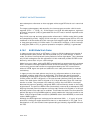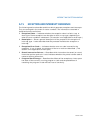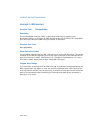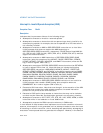
6-32 Vol. 3
INTERRUPT AND EXCEPTION HANDLING
Interrupt 4—Overflow Exception (#OF)
Exception Class Trap.
Description
Indicates that an overflow trap occurred when an INTO instruction was executed. The
INTO instruction checks the state of the OF flag in the EFLAGS register. If the OF flag
is set, an overflow trap is generated.
Some arithmetic instructions (such as the ADD and SUB) perform both signed and
unsigned arithmetic. These instructions set the OF and CF flags in the EFLAGS
register to indicate signed overflow and unsigned overflow, respectively. When
performing arithmetic on signed operands, the OF flag can be tested directly or the
INTO instruction can be used. The benefit of using the INTO instruction is that if the
overflow exception is detected, an exception handler can be called automatically to
handle the overflow condition.
Exception Error Code
None.
Saved Instruction Pointer
The saved contents of CS and EIP registers point to the instruction following the INTO
instruction.
Program State Change
Even though the EIP points to the instruction following the INTO instruction, the state
of the program is essentially unchanged because the INTO instruction does not affect
any register or memory locations. The program can thus resume normal execution
upon returning from the overflow exception handler.


















